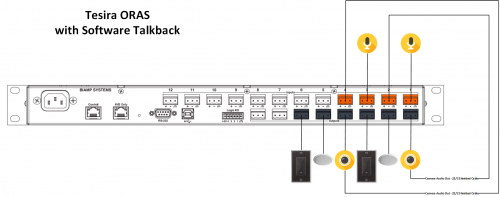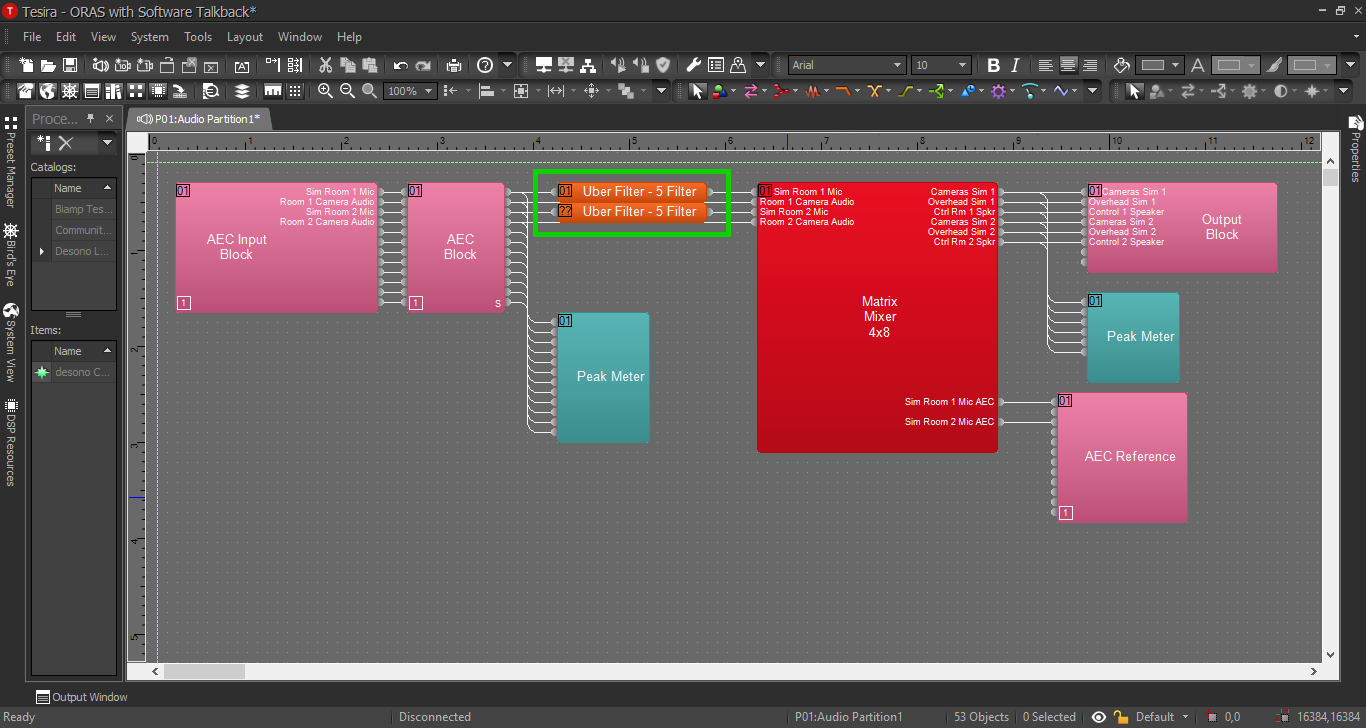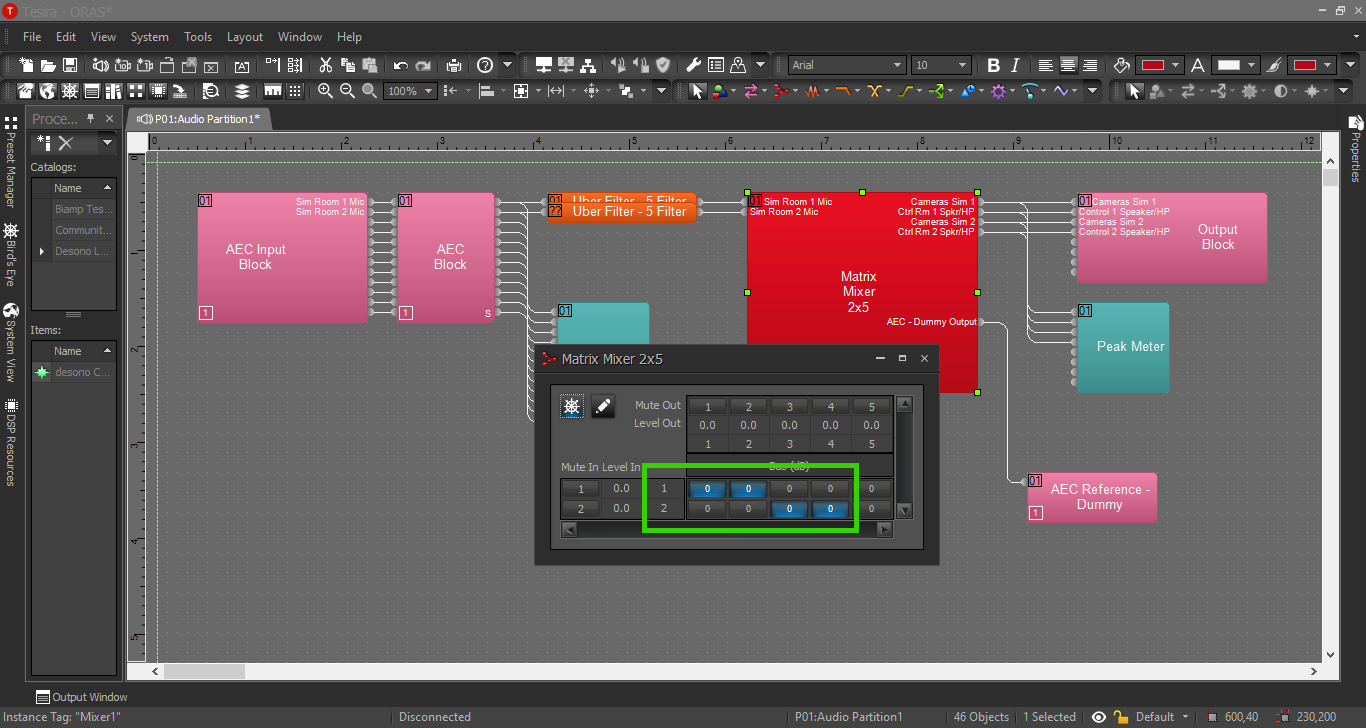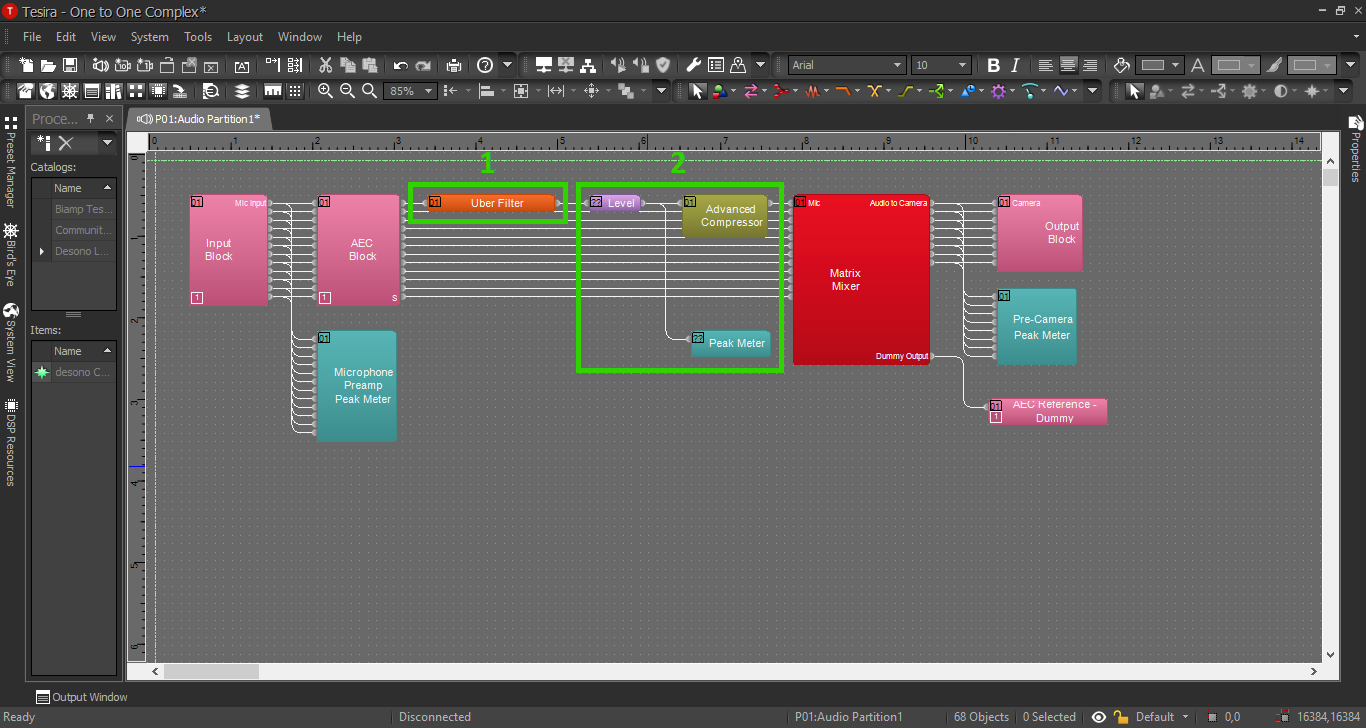Observation Room Audio Solution with Software Talkback
Contents
Description/Objective
In this example, we will be building 2 sim rooms with overhead speakers and 2 observation rooms with live audio. We will also be using VALT software talkback, so we will send audio out from the cameras to the Tesira. For physical devices, we will have 2 microphones, 2 cameras, 2 OWISP's, and 2 PSP speakers (and/or SHM-1 headphone amps).
Physical Wiring/Line Diagram
We will need 4 inputs and 6 outputs. The inputs and outputs should be as follows:
- Input 1: Sim Room 1 Mic
- Input 2: Audio Talkback from Camera 1
- Input 3: Sim Room 2 Mic
- Input 4: Audio Talkback from Camera 2
- Output 1: Camera in Sim Room 1
- Output 2: OWISP in Sim Room 1
- Output 3: Control Room 1 Speaker/HP Amp
- Output 4: Camera in Sim Room 2
- Output 5: OWISP in Sim Room 2
- Output 6: Control Room 2 Speaker/HP Amp
Tesira Software
Connections
- Once we've completed our physical connections, open the Tesira software and build a configuration.
- In this configuration we'll be using the following blocks. Add these blocks to the configuration:
- TesiraFORTE CI block
- Peak Meter x 2
- Uber Filter x 2
- Matrix Mixer with at least 2 inputs and 4 outputs, with one extra output
- Connect the blocks as follows:
- The Tesira Input block will already be connected to the AEC block, so connect the first peak meter to the Input block also. This will help us to be sure we have the proper levels set on the preamp.
- Connect the AEC block channels 1&2 to the Uber Filters.
- Send the Uber Filters to the Matrix Mixer.
- Connect output 1-4 from the mixer to port 1-4 on the Tesira Output block AND to the second peak meter. This way we can make sure to reach the right audio levels before we send it to the cameras.
- Connect the extra output from the Matrix Mixer to the AEC reference. We will not need to activate the Automatic Echo Cancellation feature in this example. However, Tesira will not allow us to delete the AEC reference block. It also will not compile the configuration if any blocks are not connected (including the AEC reference block.) So, I’d recommend using an extra output from the mixer as a "dummy output" channel. We will not send any audio to this channel.
When we're complete, our file should look something like this:
Matrix Mixer
This is how we send audio to multiple devices without a distribution amp.
Processing Blocks in Tesira
For further insight about the other processing blocks and settings, refer back to the first configuration example, or click the image below:
EQ and Compression
For information on EQ settings and compression, refer to Simple Configuration with EQ and Compression, or click the image below:




